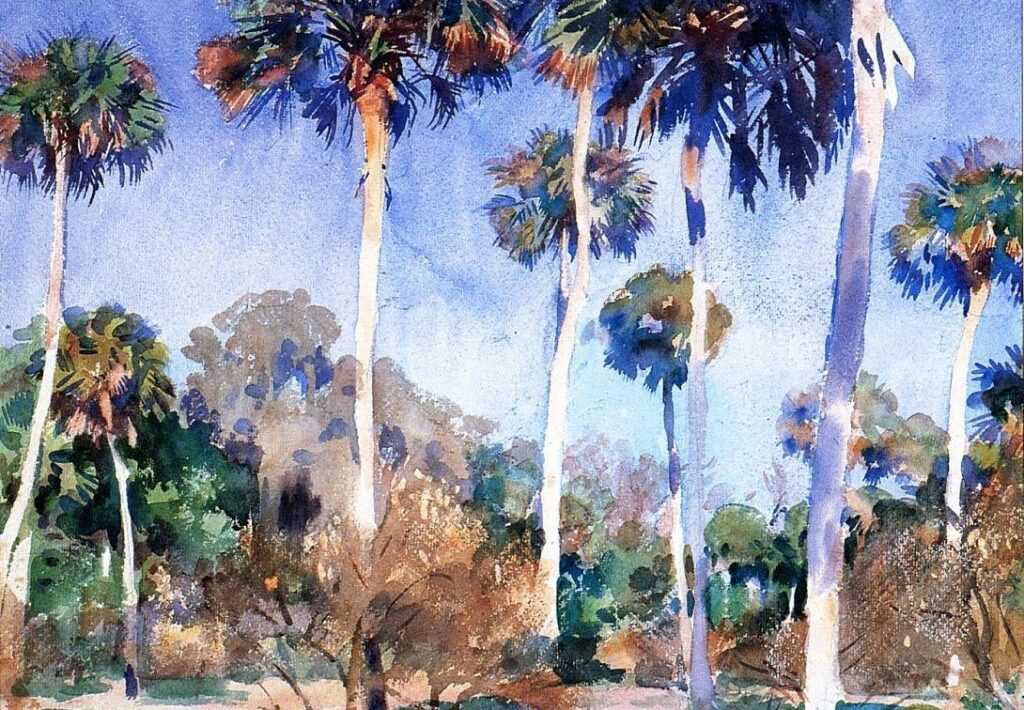Due to their characteristics, some pigments work better with certain paint media. This is particularly true and visible in the case of watercolor, which, because it has a very light glue (gum arabic), allows the different types of pigment to act freely according to their qualities.
This sometimes gives us pleasant surprises and in others, it produces results that we do not want (and that we would like to be different). While there are not necessarily “bad” pigments for watercolor, it is good to know what to expect from different pigments when working in this medium.
In this text, American artist David Berkowitz Chicago will briefly analyze the behavior of different pigments in relation to the watercolor medium, in order that you know what to expect from some of them and above all, how to investigate further if you are interested. David Berkowitz Chicago is an experienced painter, who recently announced his latest exhibition titled David Berkowitz Chicago Artist: Life is Blue. 
Know the colors before thinking about pigments
Although it is important to know how different pigments react with watercolor, first of all, it is important to know the colors. Therefore, if you are a beginner, David Berkowitz Chicago recommends that apart from reading this article, you check out some of his previous online publications and blog articles. Through them, you will get a better idea of the basics to control your colors.
First, Berkowitz suggests making a restricted palette to perfectly know those fundamental companions in watercolor that are colors. Once again understood with the qualities of colors and how to achieve different mixtures, we can always increase our palette and begin to experiment not only with mixtures of colors but also with pigments. This is what this text is about.
Mix pigments and not just colors
When David says this, he does it with the intention of emphasizing that in painting knowing the color circle in detail and how the colors are combined is not the only thing that matters. Since each color has different chemical qualities due to it or the pigments that are used to achieve that color, it is also important to know, even if they are minimal, the qualities of the pigments that we use. Thus, we can predict their results or really experiment.
There are mixtures that just never end up being homogeneously combined. On certain occasions, it may be desirable and on others not. Particularly in the case of watercolor, due to the medium used in it, this circumstance is clearly visible.
In the following text, naïve artist David Berkowitz Chicago talks more about the differences between pigments, if you have not read it yet and are unaware of this aspect of the painting, you may be interested in reading it.
Choosing pigments for watercolor
Usually, it happens that when we like the work of a certain master, we believe that having or using the same colors, we can paint like him or achieve those chromatic effects that we like so much in his works.
Many of us not only look for the colors they use, but even the “brand” that sells them to be “exact” (however, if you search for brands, you should consider that the palette used by the painter you want to copy is probably not current. Materials have been produced with variations at different times). Therefore, sometimes, it is better to search by pigment and by means.
We must know that each color is made up of a series of microscopic particles (pigment), mixed with a vehicle (medium), which make the paint can be applied with a brush. This is not always so simple, since many times the color is not just a pigment, but a mixture of them to make a certain tone or hue.
Pigments and watercolor
In watercolor, something similar happens to what happens with oil. Many people hope that by using their watercolors, they will quickly dissolve in water and evenly ink the paper. To achieve this, watercolor producers have had to resort to certain pigments and mediums that are not necessarily the most stable in the long term or the most versatile, but which allow us to achieve the results that most people expect to see easily.
This is characteristic of materials produced by large companies, who, even with their professional materials, have to appeal to the needs of a very broad and non-specialized public. While this is not necessarily negative (depending on our goals in selecting and using watercolors), it does reduce our possibilities.

